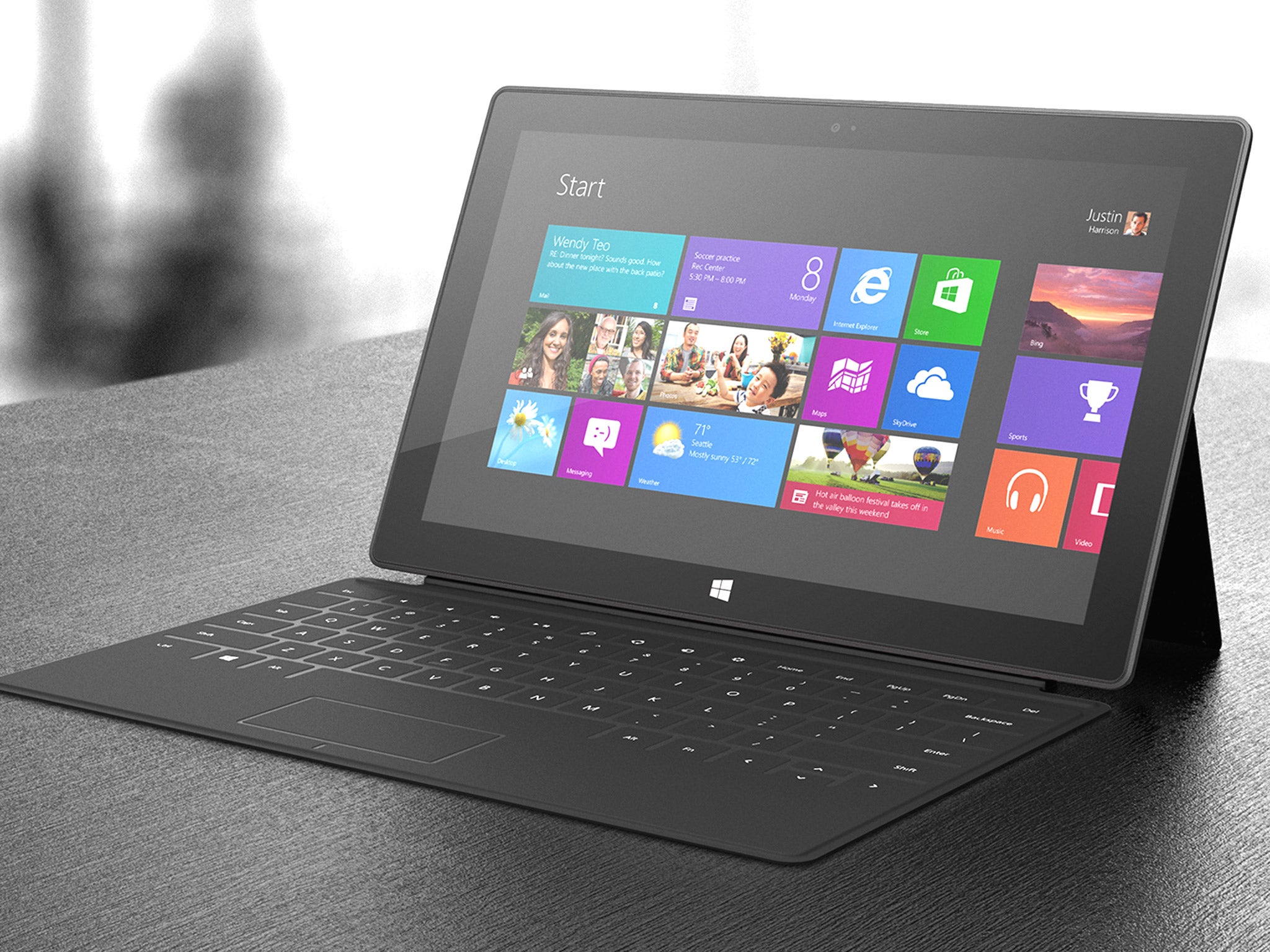A week with the Microsoft Surface: A versatile tile - but is it really worth £500?

Your support helps us to tell the story
From reproductive rights to climate change to Big Tech, The Independent is on the ground when the story is developing. Whether it's investigating the financials of Elon Musk's pro-Trump PAC or producing our latest documentary, 'The A Word', which shines a light on the American women fighting for reproductive rights, we know how important it is to parse out the facts from the messaging.
At such a critical moment in US history, we need reporters on the ground. Your donation allows us to keep sending journalists to speak to both sides of the story.
The Independent is trusted by Americans across the entire political spectrum. And unlike many other quality news outlets, we choose not to lock Americans out of our reporting and analysis with paywalls. We believe quality journalism should be available to everyone, paid for by those who can afford it.
Your support makes all the difference.Specifications
Processsor: 1.3GHz Nvidia Tegra 3 CPU.
Storage: 32GB (£399 for just the tablet and £479.00 with cover) and 64GB (£559.00 with cover), plus up to an extra 64GB on an SD and another 64GB on a micro SD card and the option of extra storage on a USB.
What else: It comes with 2GB of RAM, Wi-Fi and a device detector so it can sync with your phone and other devices such as tablets and game consoles. It has Bluetooth 4.0. The anti-glare, 10.6 inch, 366x768 pixel “ClearType” touchscreen offers clear, sharp images. It has cameras on both back and front of the tablet.
What is it?
It's Microsoft's answer to the iPad or Nexus 10 tablet, but less sleek and more robust. It's a double whammy of crazy new tech. Not only is it a tablet/laptop hybrid, it's a showcase for Windows 8, Microsoft's radical new operating system.
Does it work?
It's versatile; like a tablet but with a kickstand and clip-on keyboard, so it can be used like a laptop. It also lets you switch between the new Windows 8 modern user interface and the traditional Windows 7 style desktop depending on your preferred style of working.
Pros: The Windows 8 format tries to demonstrate a totally new way of working where personalisation is king. So you can pin all the apps, shortcuts and media that are relevant to you straight to the home screen. The "share" button is available with one swipe of the tablet – and gives you the option of sharing anything through email, Facebook or Twitter with just one touch. The magnetised cover is sturdy and took a lot of flinging around before it fell off.
Cons: Microsoft's Bing, unsurprisingly, is the default search engine and Internet Explorer is the default browser, which is hard, but not impossible, to change. The Windows Marketplace is bare and the combination of keyboard and touchscreen isn't as intuitive as you might hope. For example, I tried to select an arrival time in Transport for London's journey planner and it thought I wanted to copy and paste the info. Frustrating.
How does it work?
The keyboard cover is really clever. It's just like a normal durable cover, similar to Apple's £39 iPad Smart Case, but it's made of a strong but light magnesium alloy and it also houses a keyboard. The stylish flat "Touch" keyboard, with keys that don't depress, only takes a few days of jabbing too hard before you feel you can trust it to respond to your commands with a gentle press. If you have trouble with the 3mm thick "Touch" cover, there's also a "Type" option which has pressable keys like a conventional keyboard and it isn't that much thicker at just 5mm. The downside is both the covers/keyboards cost extra; from around £80-£110, available in a range of colours.
Is it worth the money?
At around £500, you're forking out the same amount as for a conventional laptop and if you need it for traditional desktop work on the go, then a laptop will be more comfortable to use. If, however, you want a tablet but occasionally need to type documents, it could be for you. You also need to be happy with a radical new layout – there's a steep learning curve with Windows 8. Also, bear in mind the new Surface Pro is due this month.
Join our commenting forum
Join thought-provoking conversations, follow other Independent readers and see their replies
Comments